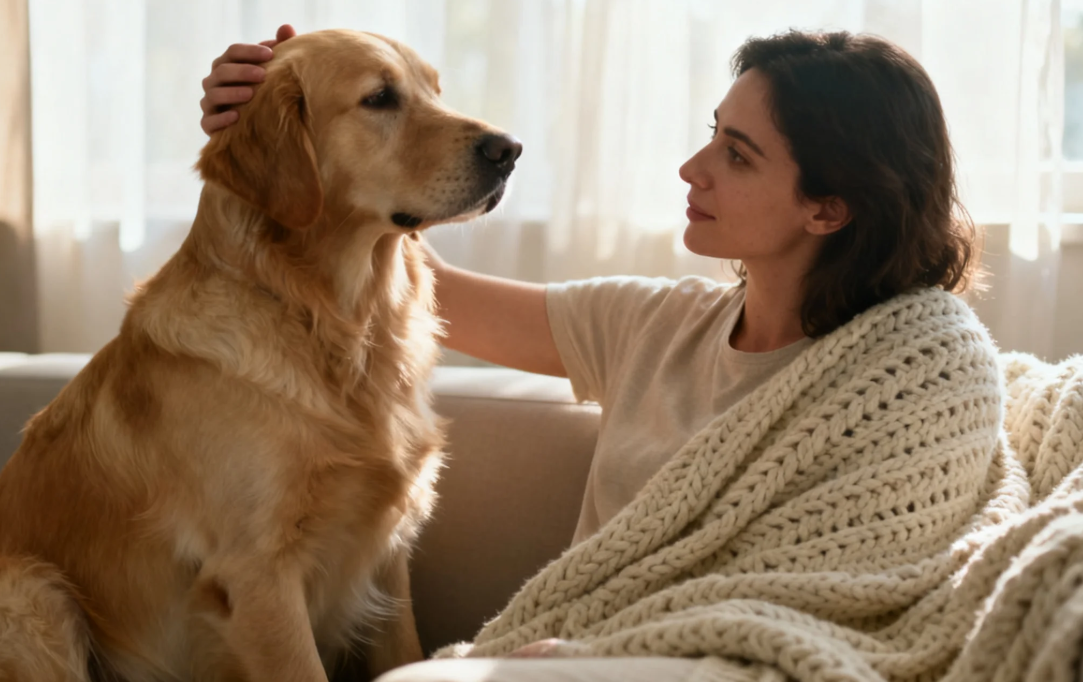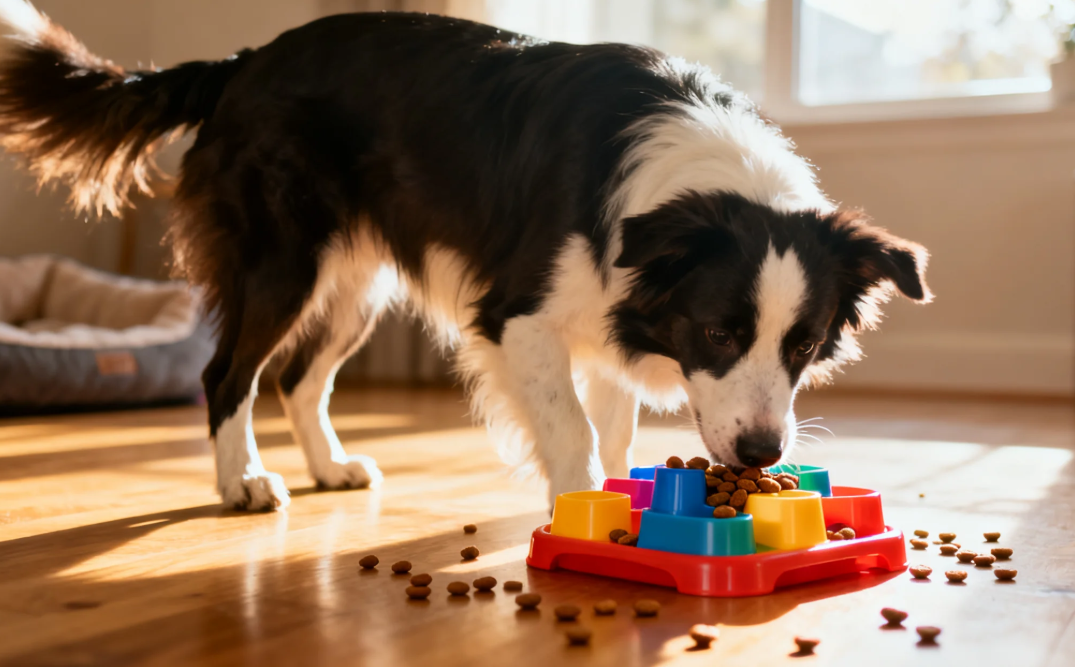🐾 Separation Anxiety in Dogs Training: A Loving Guide 🐾
For many dog parents,
separation anxiety in dogs training is one of the most emotional and challenging parts of raising a pet. Seeing your dog panic when you leave home can break your heart — but the right training can rebuild their confidence and your peace of mind. ❤️

A calm moment between a dog and their owner — the goal of separation anxiety training. 🐶❤️
Understanding Separation Anxiety in Dogs 🧐
🔍 What Separation Anxiety Really Means
Separation anxiety happens when a dog feels deep distress when left alone. It’s not about being “spoiled” — it’s about fear and insecurity.
Barking, chewing, pacing, and accidents are all signs that your dog is struggling to feel safe.
💔 Emotional Impact on Both Dog and Owner
An anxious dog isn’t the only one suffering. Owners often feel guilt, frustration, or helplessness. Remember, you’re not alone — and with the right approach, both you and your dog can heal together.
🤔 Why Dogs Develop Separation Anxiety
🔄 Life Changes That Trigger Anxiety
A new schedule, a move, or even returning to the office after remote work can cause emotional shock for your dog.
🏠 Rescue and Rehoming Experiences
Dogs with a history of abandonment often fear being left again. They may need extra reassurance and structured alone-time training.
🧲 Overattachment and “Velcro Dog” Behavior
When dogs follow their humans everywhere, they forget how to self-soothe. Separation anxiety in dogs training helps rebuild that sense of independence.
The Science Behind Training 🧪
🔬 Desensitization Explained
This method slowly teaches your dog to handle alone time without fear. Start with very short absences and increase gradually as your dog stays relaxed.
🎯 Counterconditioning in Action
Pair short separations with something your dog enjoys — a special treat, a favorite toy, or calm music. Over time, “alone” starts to feel positive.
Step-by-Step Training Plan 📝
1️⃣ Step 1 – Identify the Stress Threshold
Use a camera or phone to record your dog when you leave. Note the time when anxiety begins. That’s your baseline for training.
2️⃣ Step 2 – Neutralize Departure Cues
Pick up your keys, put on shoes, or grab your bag — then sit back down. Repeat until your dog no longer reacts to these signals.
3️⃣ Step 3 – Short Departures and Calm Returns
Leave for five seconds, then ten, then a minute. Always return before your dog panics. Success depends on many calm repetitions.
4️⃣ Step 4 – Real-World Absence Management
During early training, arrange pet sitters or doggy daycare so your dog is never left beyond their comfort zone. Consistency prevents setbacks.
5️⃣ Step 5 – Build Independence at Home
Teach “stay” or “settle” on a mat while you move around the house. Gradually increase distance and duration, rewarding calm behavior.

Mental enrichment tools like puzzle feeders help reduce a dog’s stress during alone time. 🧩
Creating a Peaceful Environment 🏡
🛋️ Home Setup That Encourages Calm
PRO TIP Designate a quiet, comfortable space with soft bedding and familiar scents. Avoid confining your dog unless they already love their crate.
🎶 Use Sound and Scent to Soothe
Play gentle background music or white noise to block outdoor triggers. Leave an unwashed T-shirt nearby — your scent can be incredibly comforting.
🏃 Mental Enrichment and Exercise
Puzzle feeders, snuffle mats, and daily walks help reduce overall stress. A tired mind and body make alone time easier to handle.
Common Mistakes to Avoid ⚠️
🚫 Moving Too Quickly
Pushing your dog’s limits leads to setbacks. Always train below the anxiety threshold.
❌ Punishment and Scolding
Fear-based behaviors can’t be fixed with discipline. Punishment increases anxiety and erodes trust.
😢 Emotional Departures and Greetings
Keep exits and entrances low-key. Overly dramatic goodbyes reinforce that being alone is a “big deal.”
Real-Life Example: Luna’s Transformation 🌟
From Panic to Peace 🛡️
When Jason adopted Luna, a rescue mix, she destroyed furniture whenever he left. Through daily micro-sessions — leaving for seconds, then minutes — Luna learned that Jason always came back.
The Turning Point 🎯
After two months of consistent separation anxiety in dogs training, Luna could nap calmly during short errands. Her story shows that progress happens when training is rooted in patience and love.
When to Get Professional Help 🆘
👩⚕️ Certified Trainers and Behaviorists
If your dog’s anxiety feels overwhelming, contact a Certified Separation Anxiety Trainer (CSAT) or a veterinary behaviorist. Expert guidance can fast-track progress.
💊 Medication as a Support Tool
In severe cases, short-term medication can help your dog stay calm enough to learn. It’s never a failure — just another form of care.
Building Lasting Trust and Confidence 🛠️
🎉 Celebrate Small Wins
Each calm minute alone is progress. Keep a log of successes to remind yourself how far you’ve come.
💪 Stay Consistent and Compassionate
Consistency is love in action. Your dog learns safety not from words, but from reliable, predictable behavior.
🏆 The Reward at the End
One day, you’ll grab your keys, step out, and check the camera — only to see your dog resting peacefully. That moment of quiet confidence means you’ve succeeded.
Final Thoughts: Love Is the Real Solution 💖
Separation anxiety in dogs training is not just about stopping barking or chewing — it’s about rebuilding trust.
When you approach your dog’s fear with patience, structure, and compassion, you teach them the most important lesson of all:
Even when you leave, love always comes back. ❤️🐾

